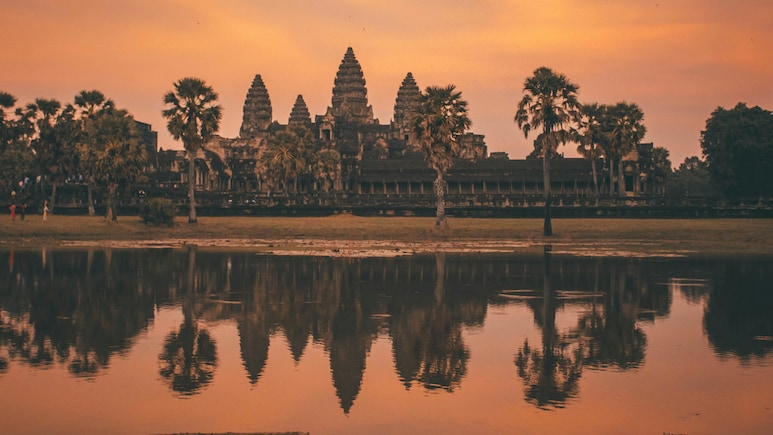
- Angkor Wat is Cambodia's largest religious monument and a UNESCO World Heritage Site
- Located in Siem Reap, it is accessible via Siem Reap International Airport and local transport
- Built in the 12th century as a Hindu temple, it later became a Buddhist sanctuary
Planning your next international trip and craving something beyond beaches, shopping streets, and mountains? Imagine standing before a sunrise that spills golden light over ancient stone towers, walking through corridors carved with celestial dancers, and feeling the quiet power of a temple that has stood for nearly 900 years. We are talking about Angkor Wat, Cambodia's most iconic tourist attraction and one of the world's largest religious monuments. Located in Siem Reap, Angkor Wat is more than just a UNESCO World Heritage Site; it is a testament to the rich cultural heritage of the region. It is a living symbol of Cambodia's history, spirituality, and resilience.
Originally built as a Hindu temple dedicated to Vishnu, it later became a Buddhist sanctuary, making it deeply meaningful for Indian travellers seeking cultural connection. So, whether you are a solo traveller, a history enthusiast, or a family looking for a unique getaway, Angkor Wat offers a rare blend of mythology, architecture, and nature.
Also Read: Why The Mystery Of 2000-Year-Old Nazca Lines In Peru Still Baffles Scientists And Travellers
Where Is Angkor Wat Located?
Angkor Wat is nestled in the heart of Siem Reap province, in northwestern Cambodia. It forms the crown jewel of the Angkor Archaeological Park, a sprawling UNESCO World Heritage Site that covers over 400 square kilometres and includes more than a thousand temples, shrines, and ancient structures from the Khmer Empire. Listed as a World Heritage Site in 1992, it is recognised for its cultural, architectural, and historical significance.
The temple itself is just 6 kilometres from Siem Reap town, making it easily accessible for travellers staying in the city. Siem Reap serves as the gateway to Angkor Wat, offering a vibrant mix of hotels, cafes, markets, and cultural experiences that complement the visit to the temple.
Also Read: Ajanta And Ellora Caves: 9 Fascinating Facts You May Not Know
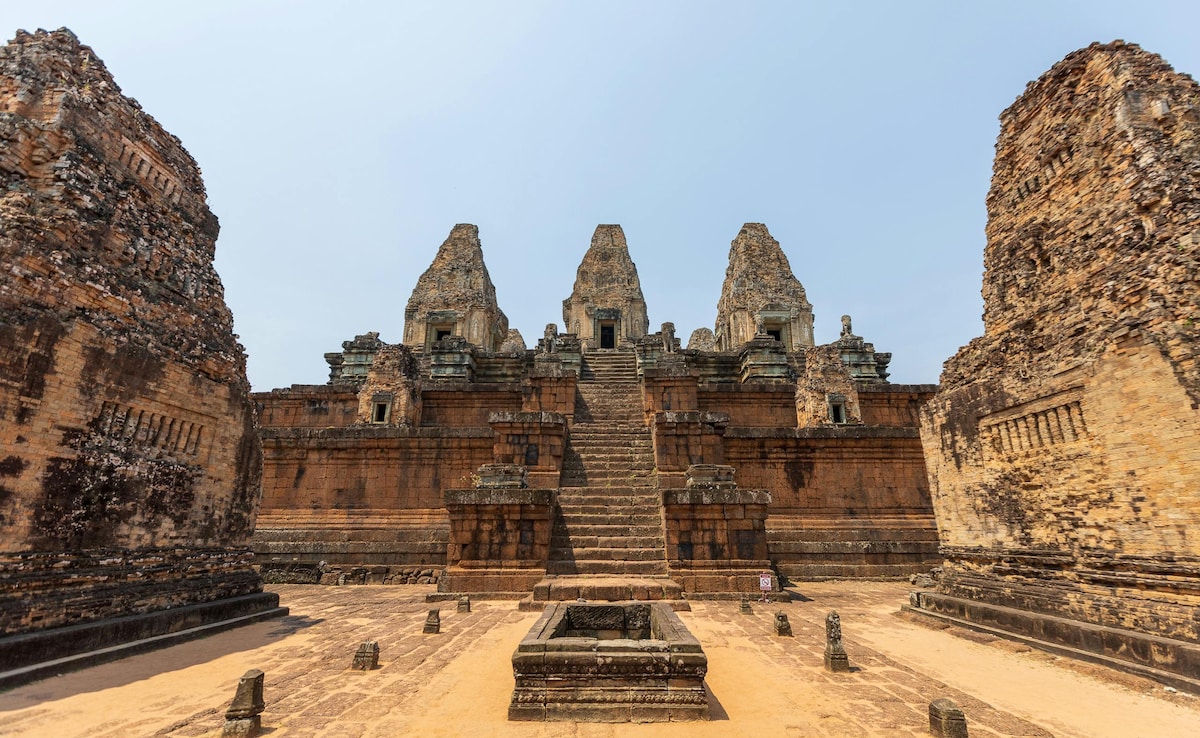
Photo Credit: Pexels
How To Get There?
- Nearest airport: Siem Reap International Airport (REP), connected to Bangkok, Kuala Lumpur, Ho Chi Minh City, and other Southeast Asian hubs
- From the airport to Angkor Wat: A 20-minute drive via tuk-tuk or taxi
Whether arriving by air or overland, the journey is smooth and scenic, with local transport options including tuk-tuks, bicycles, and guided tours. Most hotels in Siem Reap offer temple tour packages or can arrange transport for sunrise visits.
Also Read: This Stunning Lord Shiva Temple Floats On Lake Beratan In Bali
What Makes Angkor Wat So Popular?
1. Largest Religious Monument On Earth:
Spanning over 500 acres, Angkor Wat is the largest religious structure ever built. Its vastness allows visitors to explore for hours, sometimes days, without retracing their steps.
2. Architectural Brilliance Rooted In Myth:
The temple layout symbolises Mount Meru, the mythical centre of the universe in Hindu cosmology. The central tower rises 65 metres, surrounded by four smaller towers and concentric galleries that mirror the heavens. Every corridor, carving, and courtyard is aligned with celestial precision. UNESCO describes Angkor as "an architectural masterpiece of the classical style of Khmer art."
3. Spiritual Significance Across Faiths:
Initially built in the 12th century by King Suryavarman II as a Hindu temple, Angkor Wat transitioned into a Buddhist site by the late 12th century. Monks still pray and locals offer incense, giving visitors a sense of living history. Recognisable deities and stories, along with shared architectural styles, make it especially meaningful for Indian travellers.
4. A Symbol Of National Identity:
Angkor Wat appears on Cambodia's flag, currency, and official emblems. For Cambodians, it represents resilience, unity, and cultural continuity.
5. The Sunrise Spectacle:
Watching the sun rise behind Angkor Wat's lotus-shaped towers is a bucket-list experience. As the sky turns shades of orange and pink, the temple's silhouette reflects in the still waters of the moat, creating a moment of pure magic. "Angkor Wat at sunrise is one of the most photographed scenes in Southeast Asia," experts note. Arrive by 5 am to secure a spot near the northern reflecting pool, and do not forget your camera.
Also Read: Hampi Travel Guide: What To See, Where To Stay And Eat
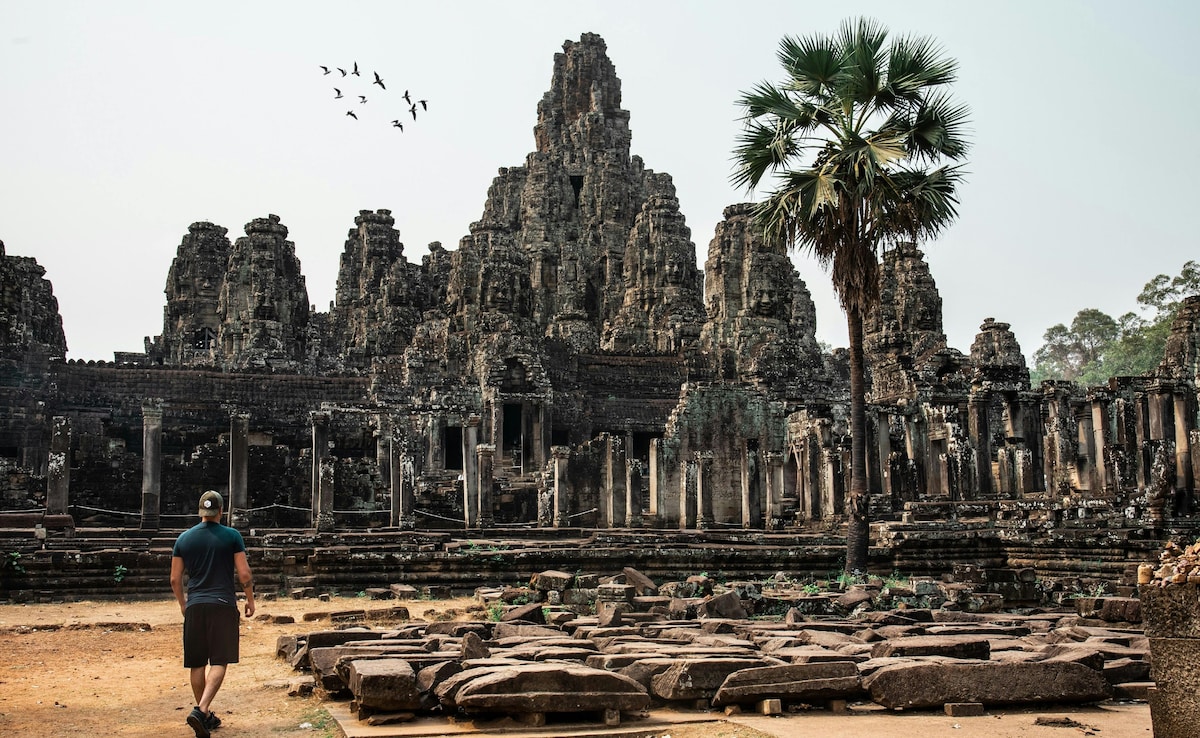
Photo Credit: Pexels
History, Cosmology, And Religious Significance:
Built by King Suryavarman II in the early 12th century, Angkor Wat was dedicated to Lord Vishnu, making it one of the most unique among major Khmer temples. Its westward orientation, unusual for Hindu temples, is associated with death and the setting sun, leading scholars to suggest it also functioned as a royal tomb.
The temple's layout represents Hindu cosmology, with sacred geometry reflecting Mount Meru at its centre. Concentric galleries symbolise layers of heaven, the central tower represents the cosmic mountain, and the moat reflects the cosmic ocean. Bas-reliefs depict scenes from the Ramayana and Mahabharata, reinforcing their spiritual and cultural significance.
By the late 12th century, under King Jayavarman VII, Angkor Wat gradually evolved into a Buddhist sanctuary. Despite centuries of change, it has never been abandoned. Today it continues as a living temple, blending Hindu and Buddhist heritage, as noted by Angkor Wat Adventures: "The temple's evolution from Hinduism to Buddhism reflects Cambodia's layered spiritual identity.
Also Read: Planning Char Dham Yatra In September? Here Is Everything You Need To Know
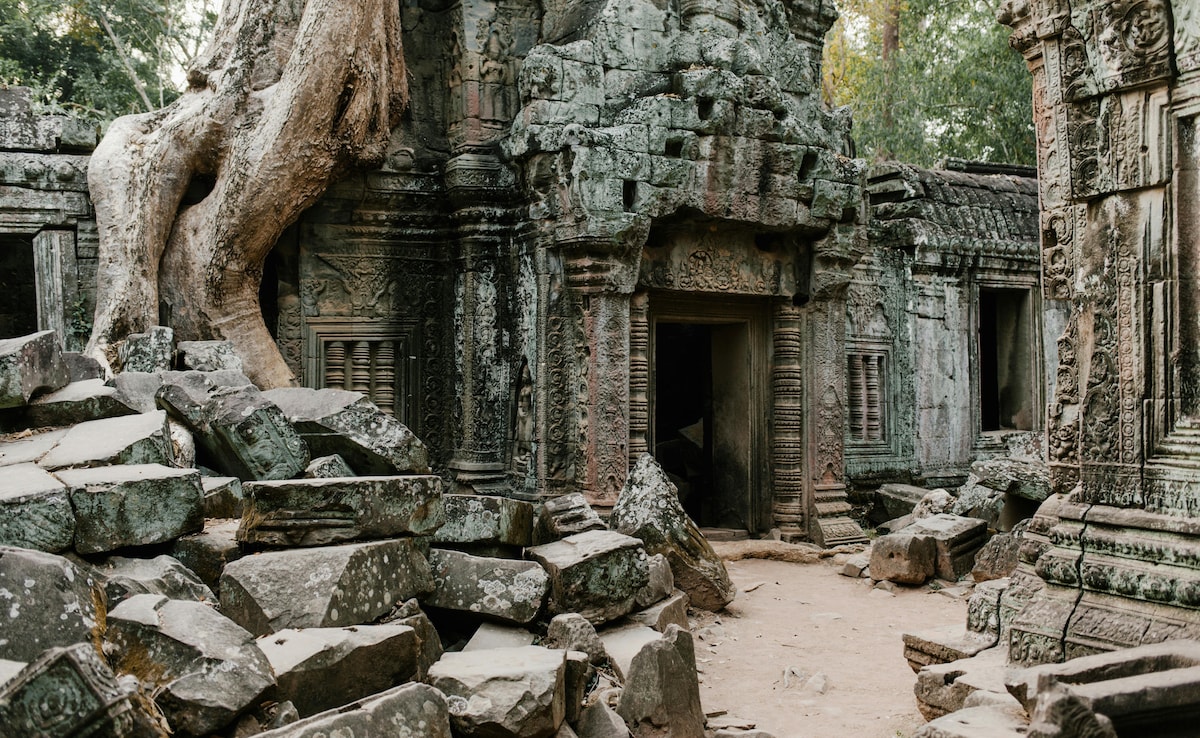
Photo Credit: Pexels
Angkor Wat 3-Day Itinerary:
Day 1: Angkor Wat + Sunrise
- Arrive by 5 AM for the sunrise
- Explore central towers, bas-reliefs, and apsara carvings
- Hire a licensed guide for context
Day 2: Angkor Thom + Bayon + Ta Prohm
- Visit Bayon Temple with its 200+ smiling stone faces
- Explore Ta Prohm, where tree roots entwine with temple walls (Tomb Raider location)
- End with sunset at Phnom Bakheng
Day 3: Offbeat Temples + Local Culture
- Discover Preah Khan, Neak Pean, and Banteay Srei
- Visit local villages for palm sugar tasting and silk weaving
- Optional: Hot air balloon ride over the complex
Essential Travel Tips:
1. Buy tickets only from the official counter.
- One-day pass: 37 USD
- Three-day pass: 62 USD
- Seven-day pass: 72 USD
2. Carry your passport; your photo is printed on the ticket.
3. Dress modestly
- Cover shoulders and knees
- Avoid sleeveless tops or shorts
- Carry a scarf or shawl if needed
4. Stay hydrated and sun-protected
- Carry water, wear a hat, sunglasses, sunscreen
- Take breaks in shaded areas
5. Best time to explore: Early morning (5-9 AM) or late afternoon (3-6 PM) for pleasant weather and ideal lighting
- Sunrise: northern reflecting pool
- Sunset: Phnom Bakheng or Pre Rup temples
5. Respect the site
- Do not climb or touch carvings
- Avoid loud behaviour
- Ask before photographing monks or locals
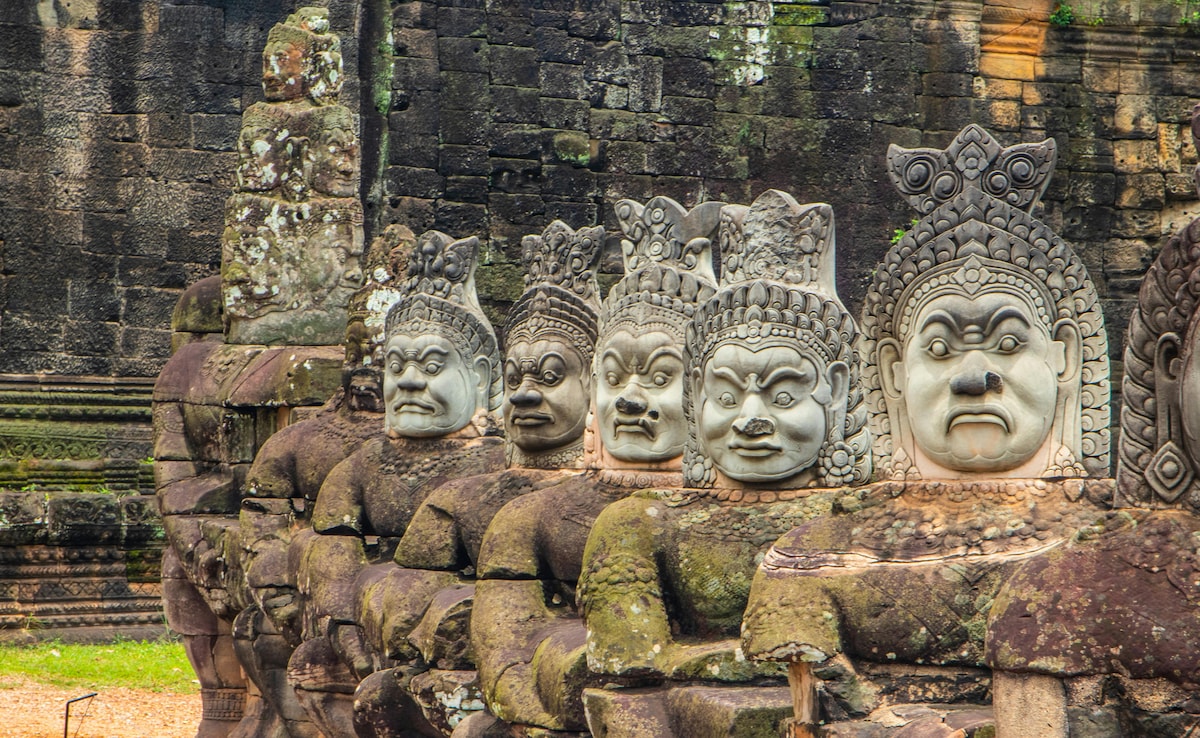
Photo Credit: Pexels
Bonus Tips For Indian Travellers:
- Language: English is widely spoken
- Currency: USD accepted; Cambodian Riel for small purchases
- Food: Vegetarian options available; Indian restaurants near Pub Street
- Connectivity: Affordable local SIM cards are available at the airport
Best Time To Visit:
- September to February: Cooler, clear skies, ideal for first-time travellers
- March to May: Dry, fewer tourists, temples less crowded
- June to August: Afternoon showers, lush landscapes, peaceful temple grounds
Angkor Wat represents Cambodia's resilience, spiritual journey, and artistic legacy. Despite centuries of change, it continues to inspire awe and reflection.
Track Latest News Live on NDTV.com and get news updates from India and around the world

